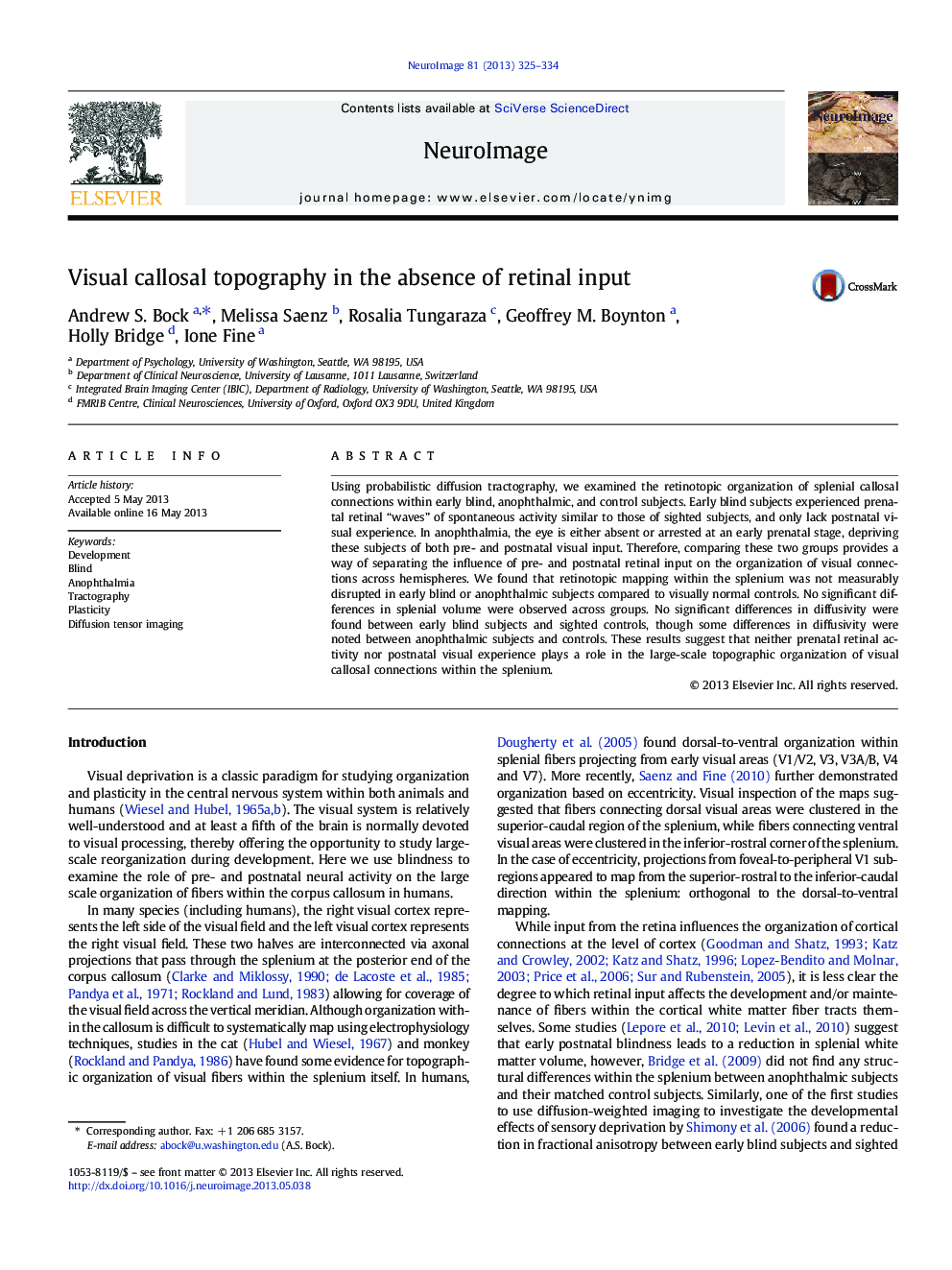| Article ID | Journal | Published Year | Pages | File Type |
|---|---|---|---|---|
| 6029121 | NeuroImage | 2013 | 10 Pages |
Abstract
Using probabilistic diffusion tractography, we examined the retinotopic organization of splenial callosal connections within early blind, anophthalmic, and control subjects. Early blind subjects experienced prenatal retinal “waves” of spontaneous activity similar to those of sighted subjects, and only lack postnatal visual experience. In anophthalmia, the eye is either absent or arrested at an early prenatal stage, depriving these subjects of both pre- and postnatal visual input. Therefore, comparing these two groups provides a way of separating the influence of pre- and postnatal retinal input on the organization of visual connections across hemispheres. We found that retinotopic mapping within the splenium was not measurably disrupted in early blind or anophthalmic subjects compared to visually normal controls. No significant differences in splenial volume were observed across groups. No significant differences in diffusivity were found between early blind subjects and sighted controls, though some differences in diffusivity were noted between anophthalmic subjects and controls. These results suggest that neither prenatal retinal activity nor postnatal visual experience plays a role in the large-scale topographic organization of visual callosal connections within the splenium.
Related Topics
Life Sciences
Neuroscience
Cognitive Neuroscience
Authors
Andrew S. Bock, Melissa Saenz, Rosalia Tungaraza, Geoffrey M. Boynton, Holly Bridge, Ione Fine,
